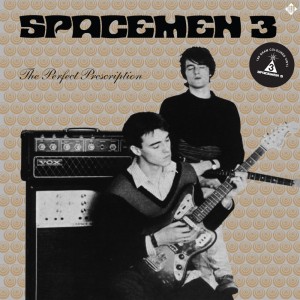26
℞ For NF: High Demand for Prescriptive Nonfiction
Against the violent protestations of many an erudite thought leader, literary agents and the publishers they serve all shove nonfiction authors and their writers toward a prescriptive structure for their books. The mass market demands we break down complex subjects this way, “practically,” with clearly organized advice, spelled out step-by-step. We can’t explain how to change the smoking habit without laying out steps in a logical and effectual process.
This is not to say there’s no harbor left for narrative nonfiction—there is. Also known as “creative nonfiction,” narrative nonfiction is more or less true – the story of an astounding adventure, survival, career, celebrity experience, etc. – which follows the rules and conventions of fiction: Think character development, plot, recurring motifs, rising action, climax, dénouement, etc. Some notable examples of narrative/creative nonfiction:
- Unbroken: A World War II Story of Survival, Resilience, and Redemption
- Wild: From Lost to Found on the Pacific Crest Trail
- Midnight in the Garden of Good and Evil: A Savannah Story
- Seabiscuit: An American Legend
- A Walk in the Woods: Rediscovering America on the Appalachian Trail
- A Year in Provence
- The Diary of a Young Girl (Anne Frank)
- A Million Little Pieces
- The Perfect Storm: A True Story of Men Against the Sea
- Julie and Julia: 365 Days, 524 Recipes, 1 Tiny Apartment Kitchen: How One Girl Risked Her Marriage, Her Job, and Her Sanity to Master the Art of Living
- The Emperor of All Maladies: A Biography of Cancer
- The Boys in the Boat: Nine Americans and Their Epic Quest for Gold at the 1936 Berlin Olympics
When submitting such a narrative nonfiction proposal – let’s say, Love, Life, and Elephants: An African Love Story by my friend and heroine, Dame Daphne Sheldrick – an agent or editor will expect the book to be complete, and to see a synopsis and sample chapters, if not the whole manuscript. Some might consider a proposal only. But either way, they’ll expect to be swept up by the story, as they would reading a novel. What matters most here is the writing, the storytelling, the craft. Think In Cold Blood. Think Angela’s Ashes.
For narrative nonfiction, it’s helpful – but not necessary – to begin with a significant platform. Sebastian Junger, Cheryl Strayed, and John Berendt were all well-known journalists, and Truman Capote and Norman Mailer were both renowned, well—they were iconic. But nobody knew who Dave Pelzer was when he wrote A Child Called It in 1995, to stunning success.
Prescriptive nonfiction, on the other hand, absolutely requires platform, which matters, sorry to say, even more than the craft. In fact, agents and editors will look at an author’s platform first before reading any of the text in the proposal. It’s a good bet that the first thing she or he will do upon opening your proposal is to Google you. Do you have a national presence or following? How soon could you? Is there an alphabet soup of titles and acronyms after your name? If not, how have you established yourself as a leader in your field?
But don’t despair. It’s still possible to get a prescriptive nonfiction book deal without a towering platform. Because the second thing necessary in a non-narrative nonfiction proposal is the prescription itself. What are you suggesting the reader will learn or do, when, in what order, and why? This is not a story, per se, but a book of information, writes agent Caitlen Rubino-Bradway of the LKG Agency in New York. So it’s the quality of information that counts most, the efficacy of the program. Of course it’s helpful if a professional writer, master of craft, makes the writing sing. But that’s less important than the instructions, directions, prescriptions in the book. A great ghost can make all the difference here:
Because here’s where book structure becomes paramount. According to superagent Jane Friedman, the prescriptive nonfiction proposal sells based on relative benefit to the reader: The way it explains how you can make money, lose weight, ride a horse, overcome pancreatic cancer, meet the spouse of your dreams, or buy no-money-down real estate in a recession. In short, these are self-help books, which explain how to accomplish or understand something—therefore the quality of the “how to” comes first. And quality and structure are synonymous. A prospective author might have worked in a field, or experienced something remarkable, or even taught something for decades without ever having articulated a process or organized a program.
Some great examples of prescriptive nonfiction include:
- How to Win Friends and Influence People
- How to Lose Friends and Alienate People
- How to Read Literature Like an English Professor
- They Fuck You Up: How to Survive Family Life
- How to Write a Novel in 30 Days
- 30 Days to Understanding the Bible
- The 30-Day Diabetes Miracle
- No Excuses: The Power of Self-Discipline
- A New Earth: Awakening Your Life’s Purpose
- The Power of Positive Thinking
It’s worth noting that within the structure of prescriptive nonfiction (advice, self-help, how-to), an author can – and probably should – tell stories, either personal or about others, as long as those narratives are relevant, illustrative, and instructive. But the whole book is not a story from beginning to end.
Instead, the superstructure in prescriptive nonfiction is the system, the tried-and-true methodical approach an author’s suggesting to a reader in a kind of contract, a promise to deliver results if the reader follows the system. When we co-wrote The 30-Day Diabetes Miracle and the 77 Questions for Skillful Living/Slow Medicine series of books, we focused on such well-studied, well-tested, and demonstrably effective systems (in the first case, a three-part plan to conquer diabetes in a month; in the second, a series of questions to achieve extraordinary health).
During the initial phase of a consultation with new Author-clients, and as they develop a killer proposal, great ghostwriters develop with their Authors the best possible way to organize a lot of information into a step-by-step plan that a mass market will find palatable—such organization is often key to the sale, or the difference between a rejection and a six-figure advance. Author and ghost then continue to hone the structure, the organization, the system they’re proposing, to maximize interest from agents and publishers—because they can show a potentially big benefit to their mutual readers.
So what have you learned on your life’s adventure? What can you –and only you – instruct the the world about?
Here’s some more info on nonfiction proposals from one of the giants in the NYC agent field, Jeff Kleinman of Folio Literary Management, one of the agencies with which we work.






